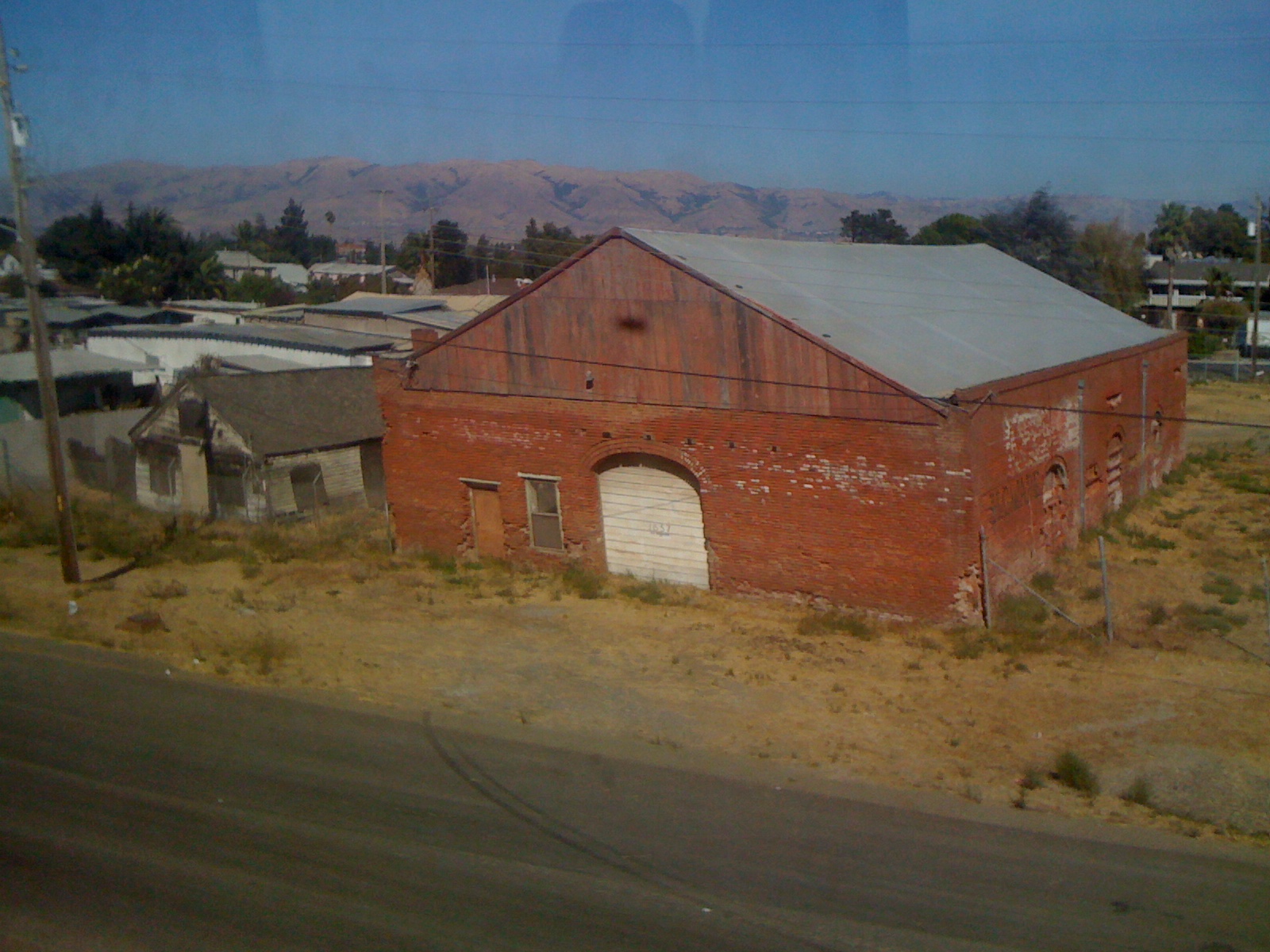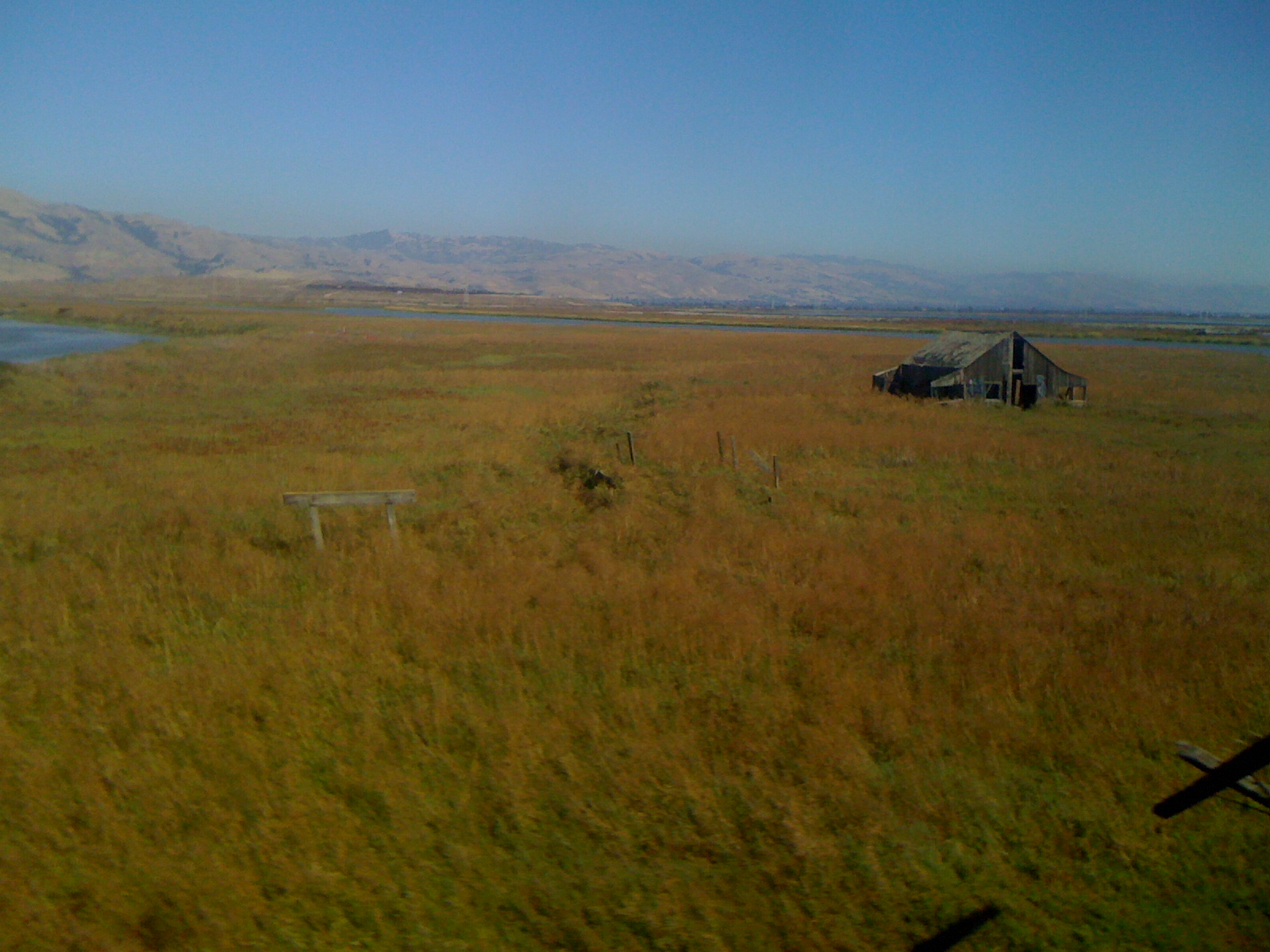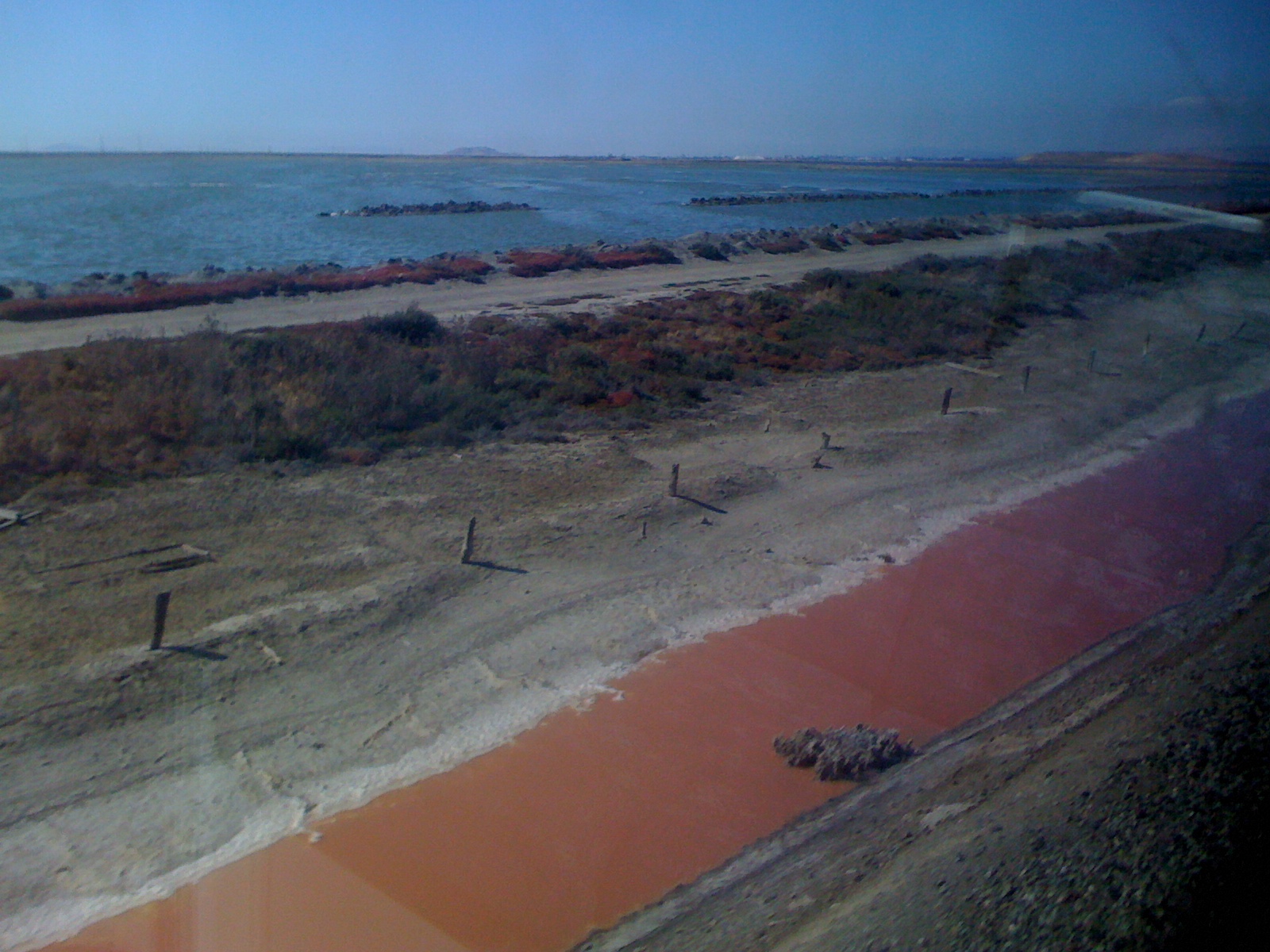
If it's true that global ocean levels are rising--and I'm not sure I'm one to disbelieve it--the edges of the San Francisco Bay don't seem to have received the memo. For a century or more they've been defying the trend.
I took the train to work for the first time this week. Part of the route takes me through Alviso. Alviso has the distinction of rising up from new land being dredged from the southernmost tip of the San Francisco Bay.
By reputation (brand?), Alviso is not exactly a den of excitement around here. Judging by the exterior, it looks as if the representative Italian Restaurant and Cocktail Lounge opened in the 1950s and never noticed that the calendar moved on to the 60s. It's perceived as a bit of a swampy shantytown that folks in less moist parts of the Bay Area are surprised still supports a population. It's thought of as a disaster waiting to happen as sea levels rise this century.

But that's not entirely the Alviso I saw. I didn't see a slum on the verge of becoming a ghost town. I saw a habitat. I saw a community of stubborn, intrepid stalwarts who are more full of pride and compassion than they are of shame and embarrassment. I saw a refuge for wildlife, scores of sandpipers safe in man-made lagoons, gulls in flocks, egrets undisturbed and able to fish without fear of being run off. It's a protected area, actually.
Sure, not all is right. Just east of the heart of Alviso is an identity crisis. The area is ambivalent, schizophrenic, unsure if it should be ocean or land, a ribbon of confusion that was once deep water, then boat jetties, now marsh, perhaps one day to be high-rise office plazas or airports. It is changing, and rapidly. Even the controlled environment of the train can't hide the rising stench of rot as the stagnant pools evaporate, as life gives way to death, which gives way to nutrient-rich ground, which gives way to life again.
The marshland doesn't hide everything. There are pools of rancid, ruddy water where there had been Bay a century ago. Or a year. Who knows? Puddles and dead spots where the puddles have just dried, leaving behind contour lines of salt and brine. And, approaching Fremont, there are great plains of arid white lifelessness, some thick and sparkling with crystal, intentional mines for the rich minerals the sea has to offer once it dries up and goes away. Old gates framed in wood and placed in the middle of berms that looked like they were designed randomly instead of bulldozed by a corporate engineer, gates screwed down tight, perhaps forever, to keep out the tide and reshape the edge of the Bay.

As the land dries up, the water in it leeches away, leaving barren, ethereal, otherworldly terrain at first. Then the salt deposits give way to reeds that sprout despite the salinity of the soil. They collect new moisture and begin replenishing the habitat. But they arrive at a price: they change things. They change everything. They move the ground and put it someplace else, somewhere lower and very soggy. As the groundwater evaporates away and the level sinks even more, ancient shacks disappear into the mud and reeds. The cynic says these are abandoned failures. I say they are the last remaining reminders of a romantic past, like the wreck of the Sir Walter Scott sinking into the Mississippi. Those reeds keep putting down their roots after the shacks crumble, and they remain, stubborn, determined, committed. Eighty years ago, the path my train takes would have been a bridge. Today, the vegetation proclaims it dry land.
Is anything a failure? Those settlers of Alviso created a community at the edge of an industry that shaped what would one day become the greatest locus of technological development in the world. Their disappearance facilitates the ongoing transformation of nations. Did they fail, or did they struggle to hold fast until reinforcements arrived?
I wonder: how much do my failures fertilize the ingenuity of those who show up in my wake?
It kinda makes me wish I was failing a little more.

Question: Where have you seen life rise up from decay?
Read more about Alviso.